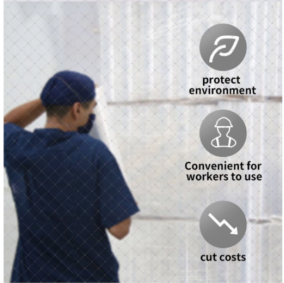Hand Wrapping Pallets - Efficient & Secure Pallet Wrapping Solutions
Hand Wrapping Pallets An Essential Guide
In the world of logistics and warehousing, the efficient and safe transportation of goods is paramount. One of the most critical steps in this process is the proper wrapping of pallets. Hand wrapping pallets is a process that, while seemingly simple, requires attention to detail and technique to ensure that products are secure during transit. This article explores the importance, methods, and best practices for hand wrapping pallets, making it an invaluable skill for anyone in the supply chain industry.
The Importance of Hand Wrapping Pallets
Hand wrapping pallets is essential for protecting goods from external elements and preventing damage. Properly wrapped pallets help secure the cargo, reducing the risk of shifting during transport. This is particularly important for items that are fragile or have irregular shapes. Additionally, effective pallet wrapping minimizes the risk of contamination and environmental exposure. With an increase in e-commerce and global shipments, ensuring that products arrive at their destination in pristine condition is more important than ever.
Materials Needed for Hand Wrapping
To begin hand wrapping pallets, you'll need a few basic materials stretch film (also known as pallet wrap), scissors or a cutting device, and gloves for safety. Stretch film comes in various sizes and thicknesses, so it’s important to select the right type based on the weight and fragility of the goods being wrapped. A standard hand-held dispenser can also improve efficiency and ease the wrapping process.
Techniques for Effective Wrapping
hand wrapping pallets

1. Base Layering Start by centering the stretch film at the base of the pallet. Wrap the first few layers tightly around the bottom to create a solid foundation. Be sure to cover the corners and ensure a stable grip on the pallet.
2. Vertical Wrapping After establishing a solid base, begin wrapping vertically around the pallet. Make sure to overlap each layer to provide full coverage. Aim for about 50% overlap to ensure that the load is tightly secured without causing any damage to the items.
3. Top Layer Securing Once you reach the top of the pallet, continue wrapping to create a secure seal. This helps to prevent any items from shifting during transit. A few additional wraps around the top will reinforce the stability of the load.
4. Finishing Touches After completing the vertical wrapping, cut the stretch film and secure the end. Tuck the film under the wrapped layers to prevent it from unwinding. It’s also a good practice to visually inspect the pallet for any loose areas and rewrap if necessary.
Conclusion
Hand wrapping pallets is a fundamental skill that enhances the safety and integrity of goods during transportation. By following the outlined techniques and utilizing the right materials, workers can ensure that products arrive undamaged at their destinations. In an era where efficiency and reliability are key, mastering the art of pallet wrapping is a small but significant investment in the overall success of logistics and supply chain management.
-
The Best Uses for Small Trash Bags in Daily LifeNewsJul.01,2025
-
Stylish Reusable Grocery Bags TrendsNewsJul.01,2025
-
Shipping Advantages of Using Bubble Envelopes BulkNewsJul.01,2025
-
How Compostable Mailing Bags Reduce Environmental ImpactNewsJul.01,2025
-
Environmentally - Friendly Bulk Poly MailersNewsJul.01,2025
-
Eco Friendly Custom Laminated Tote BagsNewsJul.01,2025
-
Have the freedom of customizing your custom mailers any way you want! Our dedicated packaging support will help deliver you the mailing experience you need to elevate your shipping experience to the next level! Start making a strong impression on your customers and stand out from your competitors! -
LIYA uses high quality raw materials which directly purchased from large enterprises domestic and overseas such as PetroChina, Sinopec, Sabic, Equate, ExxonMobil, Dow Chemical, Total, and Borouge, ensuring the price advantage and quality of the raw materials. -
LIYA uses high quality raw materials which directly purchased from large enterprises domestic and overseas such as PetroChina, Sinopec, Sabic, Equate, ExxonMobil, Dow Chemical, Total, and Borouge, ensuring the price advantage and quality of the raw materials.





